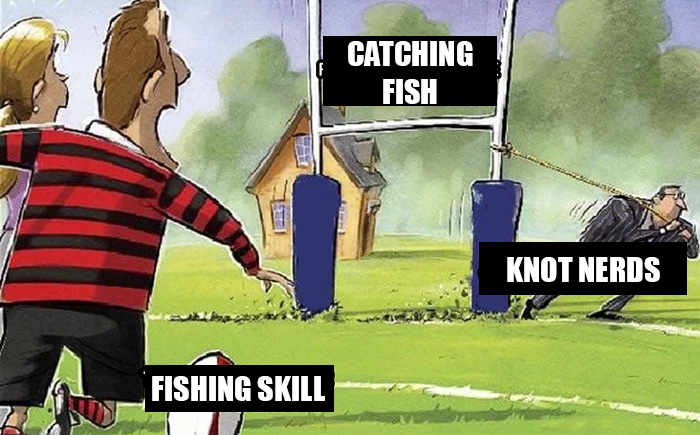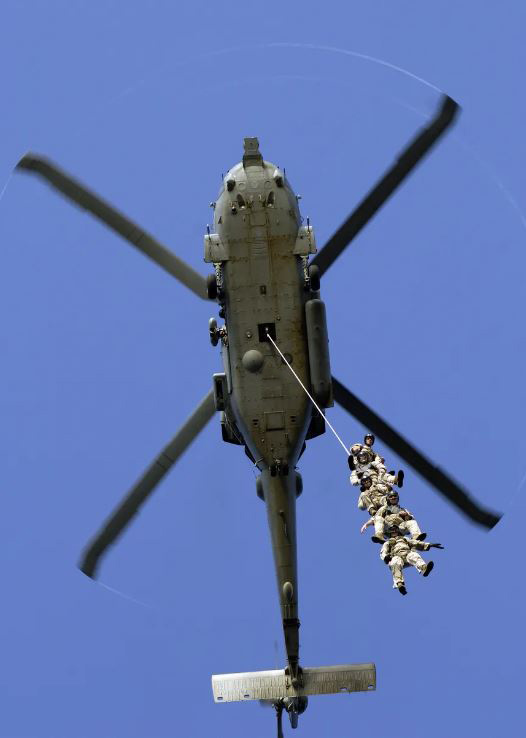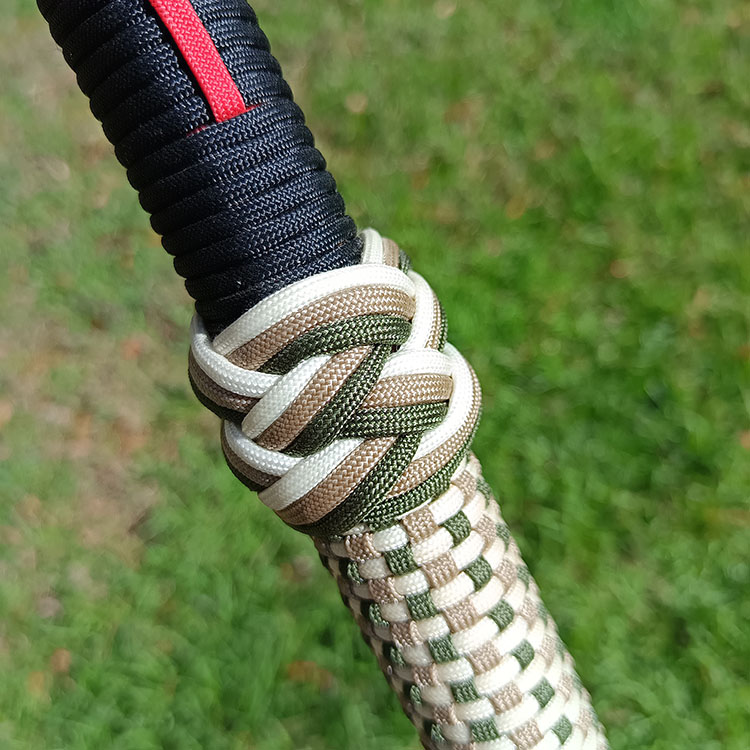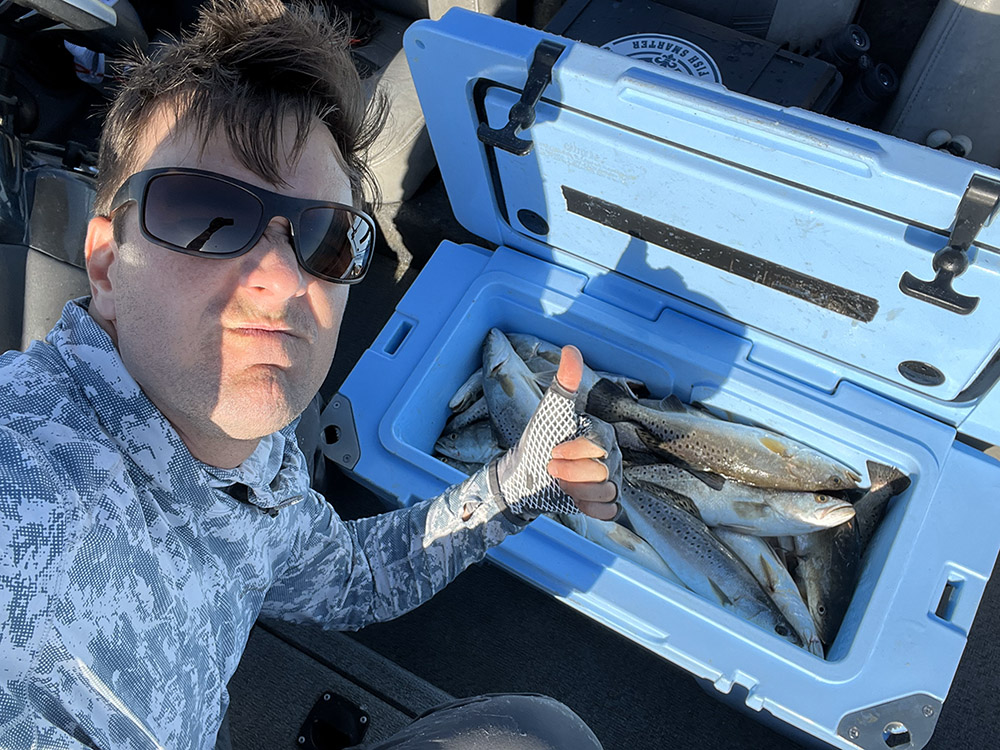Knot nerds absolutely ruin fishing, mostly because they move the goat post to where it doesn't matter:
But what is a "knot nerd"? Why am I even bringing this up to begin with? Most important: what actually matters in fishing? This and more is what I'll detail in today's guide. I'll begin with this inflammatory statement:
Tying knots is not as important as you've been led to believe...
If you've been visiting my website and YouTube channels for awhile then you may have noticed that I really don't cover knots. In fact, I've never written or filmed a single guide to tying knots (outside of a very brief and to-the-point tutorial inside Inshore Fishing 101).
This is for a couple reasons: anything and everything you need to know about knots is already covered extensively elsewhere, whether that is in a dedicated knot book or any of the thousands of videos and tutorials on the Internet. It’s a safe observation that the topic of knot tying is absolutely beat to death. That, and it’s a topic that easily distracts from the entire purpose of using knots in the first place: to go catch a dang fish.
I’ll be honest, I think some people can’t catch fish as well as they’d like the public to believe, so they move the goal-post to knot tying in an effort to compensate. I call these poor souls “knot nerds”. Which is fine, they can do whatever they want with their free time.

But, where this becomes an issue is that there’s only so much depth to tying a knot for fishing. So, entire videos are published to YouTube hemming and hawing over the strength of one knot or another, and now people are arguing that this knot retains 85% of the line’s strength versus the 90% of this other knot and it’s all just ridiculous because they’re splitting hairs that don’t need to be split.
Read this carefully: I have professionally tied knots for things far more important than catching fish. Knot tying in a place where the consequences are much more dire than losing a lure. I’ve tied everything from Swiss Seats used for rappelling down buildings and SPIE insertions from a helicopter. Yeah, if those fail, you're getting your balls crushed or, even worse, falling to your death.

I've also tied extremely complex knots like Turks Heads and decorative wraps that are meant to stay in place for decades if not forever. In fact, I recently had the pleasure of seeing a paddle I wrapped for a particular Bulk Fueler and am happy to report that — twenty years later — the cord is still intact and tight. Hmmmm, it's almost like I've had some experience tying knots. Yet I avoid being a knot nerd.

I didn't tie this knot, but taught the guy who did. It's still tight and presentable twenty years later!
So which knots actually matter?
So, with that in mind, of all the things I give attention to on a fishing trip, tying a knot is one of the least. You only need to know how to tie a handful and tie them well.
If I could list off a handful of knots that actually matter they would include, but are not limited to:
That's it!
You should be comfortable tying those knots and practice tying them until doing so becomes second nature.
Otherwise, everything else you find in my content are the tough things not everyone knows how to do. Things like finding biting fish in the first place. Let me make some recommendations:
Focus on These Skills Instead of Knot-Nerdery
The very first thing you need to get good at is properly judging the conditions. While there are many, I advise you learn to judge the wind first. This guide details how I use Windfinder to that end.
Next, I strongly recommend learning how to position your boat according to the wind, maximize the number of anglers fishing with you and selecting the best sinking weight. This free video course details exactly how to do that.
Lastly, you will need to be familiar with white PVC poles. They are used for marking safe routes and underwater hazards, but how do you tell them apart? This guide tells you what to look for. This way you can safely get to your fishing spots and back to the dock, without damaging your boat or worse.

Do you want to catch limits of fish? Yes? Then focus on what matters with the limited time you have.
Where to get more fishing knowledge...
While you'll find a lot of content here and on my YouTube channel detailing knowledge like what's linked above, you will find all of them in one place in my course Inshore Fishing 101 and the accompanying seasonal courses. The finishing touch is LAFB Elite's Community for reading detailed fishing reports and getting help planning your fishing trip (using what's taught inside 101, of course).
”
I am horrible with GPS/computer interactions , so the building routes with Google was great. I can't wait to put in action to avoid shallow water and navigational hazards.
Something else I learned was fishing the entire water column, now I know what I was doing wrong and why I wasn't catching fish.
Inshore Fishing 101 is great because it is self paced, well organized and easy to navigate!
Shawn Bailey / Inshore Angler
”
Inshore Fishing 101 was an excellent experience. I learned a lot of good information.
I think the most important thing that I learned was how to use Google Earth Desktop to find new fishing spots and avoid hazards. I never realized how awesome of a tool it is.
Above all, I really enjoyed the attention to detail. I feel like the information inside this course is so broken down that anyone can understand it.
Trey Guidry / Louisiana Native
”
The courses inside LAFB Elite, especially Inshore Fishing 101, are very complete. There's a lot of information in them, so I recommend taking it slow and using what you learn out on the water.
Otherwise it will leave your brain exploding with knowledge. But it all does make more sense when you get out on water and see it happen before your eyes.
The difference is that with Devin's courses you'll know what to look for and what to expect. This makes fishing more productive.
Robbie Larson / Mississippi Angler
”
I really appreciate Devin's teaching & how he is "to the point" and down to earth, yet professional and gives a great presentation of what I need to know in order to catch speckled trout and redfish.
Before taking Inshore Fishing 101 I have not had very many successful trips to Louisiana, but with these great learning experiences, since completing 101, I have had more success. Finding the best conditions, using the right tackle, Google Earth Desktop & technical stuff on my Lowrance, etc., the list is too long for this, so THANKS from a rookie inshore fisherman!!!
Captain Devin has done an excellent job with these classes! As a speaker, preacher, college teacher, & singer I appreciate the research, experience, time, & knowledge he put into the great presentations of each class. I can not suggest any changes for such an excellent course!
Ira Burge / College Teacher
What do you think about knot nerds?
Am I on to something here or am I just being arrogant? What knots do you prefer? Is my above list complete enough for Louisiana's inshore angler or is there something I'm missing?
I love it when people take time to comment on my website, so if you have something to add then please do so below.
Tight lines, and thanks for visiting!

I agree Devin. Your list is all an angler should need.
I agree 100%. I tie 4 knots 99.9% of the time. Uni-uni, uni, and loop knot with occasional improved clinch. Simple, fast, dont have to think to hard, and works for everything in my tackle bag.
I couldn’t agree with you more. But I submit if you are worried about knot strength, you might want to think about why reels have drags.